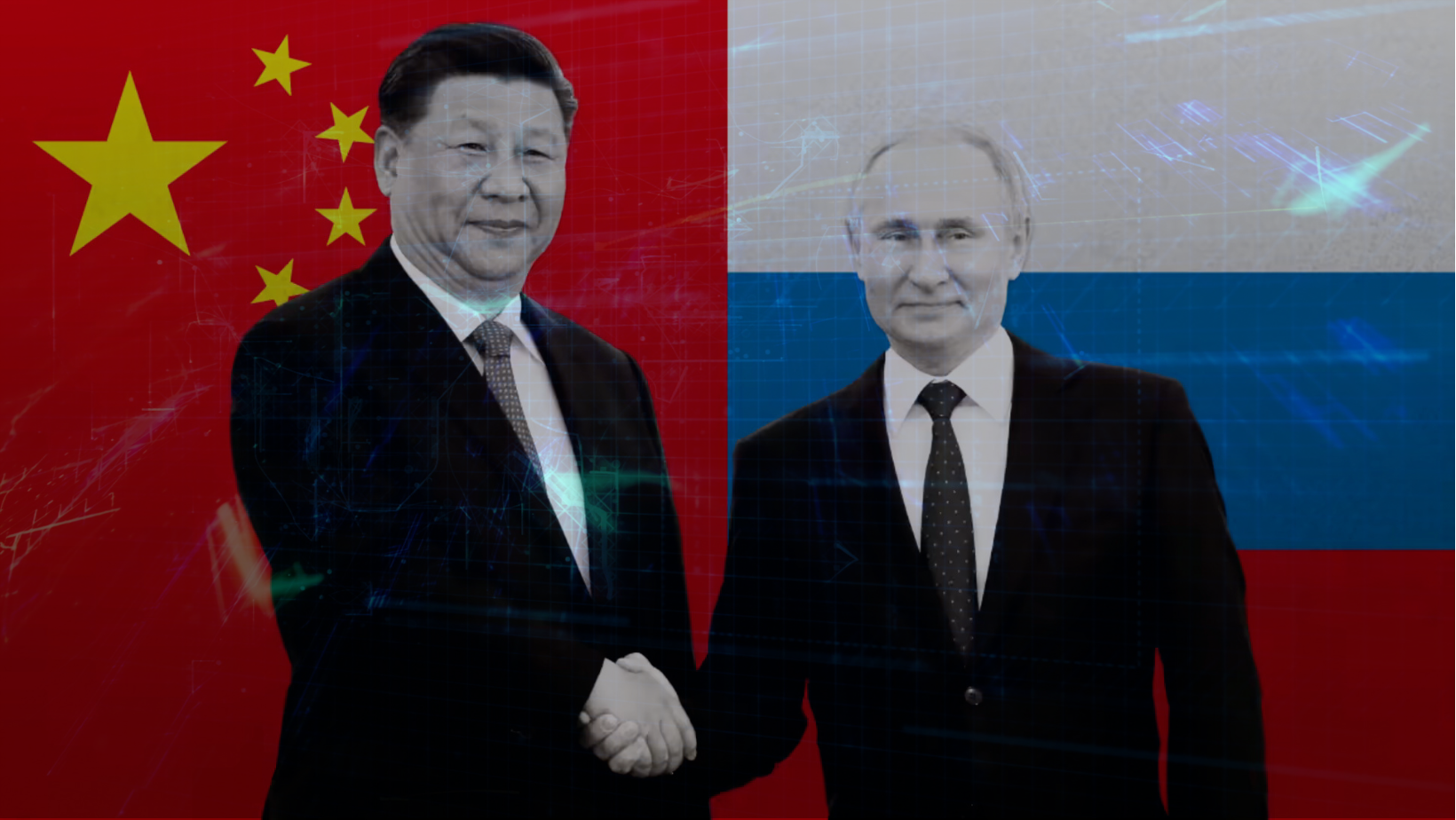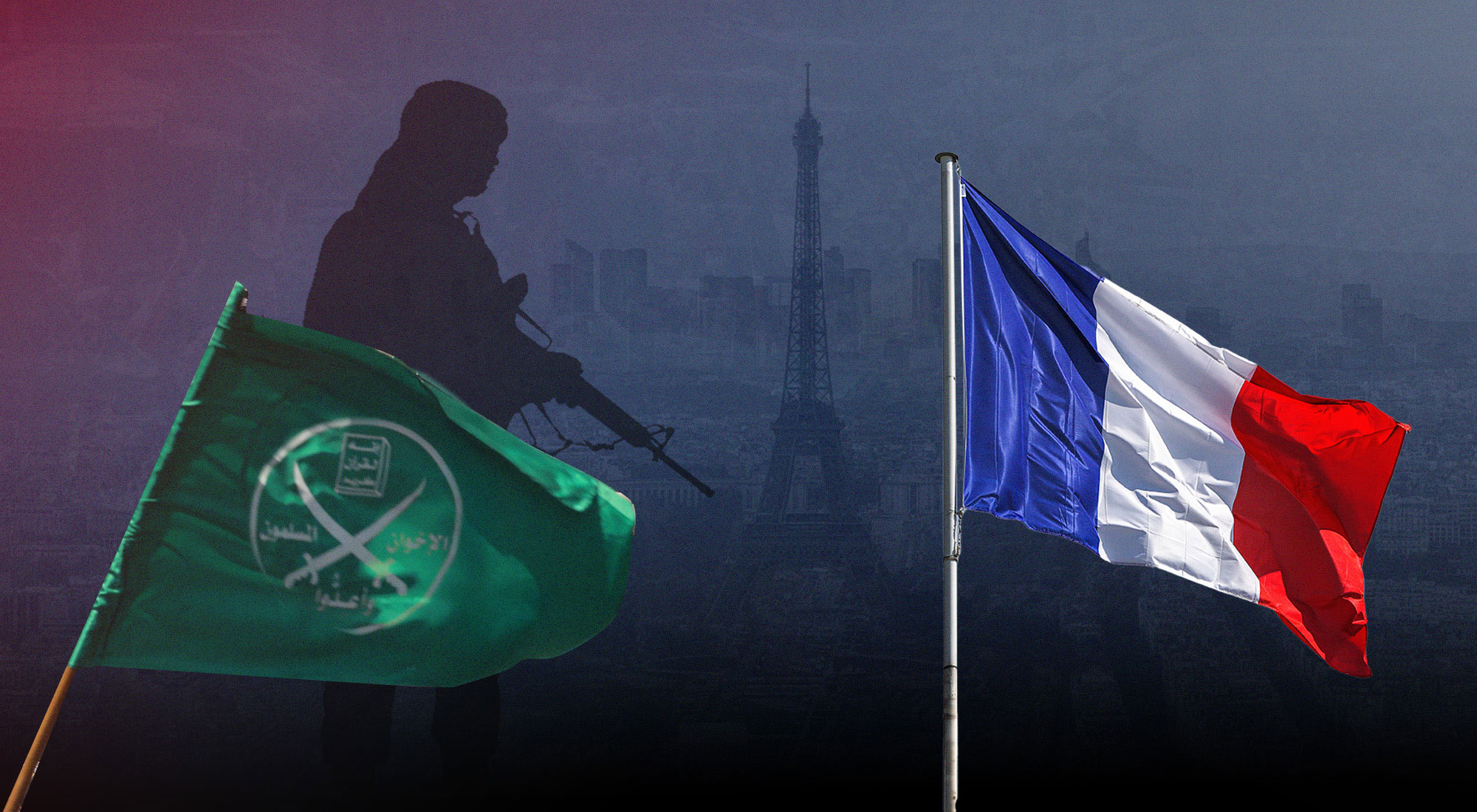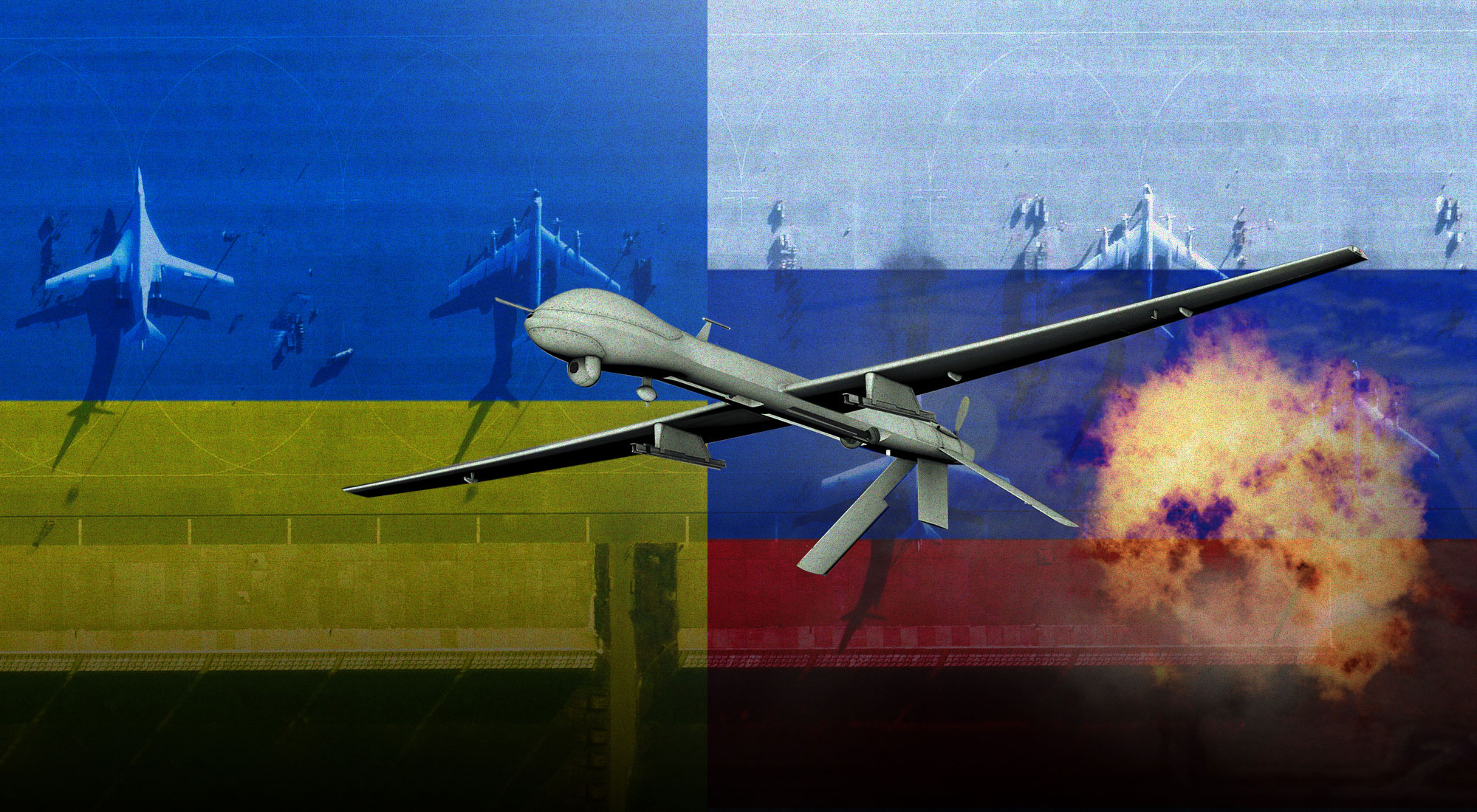At first take, the future of Sino-Russian scientific and technological cooperation, especially in the defense and national sector, seems brimming with promise. Leaders and senior officials from both countries have certainly been talking up this dimension of their quasi-alliance, or what they now call ‘a strategic partnership with no limits’. In this unequal partnership—Russia is now dwarfed by China in terms of raw material power, both realized and latent—Moscow believes that it still has much to bring to the table in terms of defense technology, and especially when it comes to co-development or joint production of advanced military hardware.
Notwithstanding the ostensible poor performance of Russian military equipment in the “special military operation” in Ukraine, much of it of Cold War vintage, Russia maintains the capability to produce high-end weaponry, albeit not across all technology areas but world-leading in some. Despite China’s precipitous economic rise, huge manufacturing capacity, and major advances in scientific research output, it lags behind Russia in some areas of armament production. The sheer number of arms deals clearly indicates that Russian military systems and technologies remain attractive for Beijing despite recent advances in China’s own capabilities. There are reasons beyond financial incentives for Moscow to collaborate with China in defense. On its side, Russia fears being locked out of the race to translate key emerging technologies into military power. It hopes to tap into Beijing’s major investment in technology areas such artificial intelligence (AI). The future offers up a potentially symbiotic relationship between the two powers.
Such high-tech partnership between Moscow and Beijing should be a force multiplier for both countries, especially in light of Washington’s policy towards its great power rivals. U.S.-imposed economic pressures, from sanctions against Russia to the trade war with China, and technological impediments, such as export controls, have created incentives for expanding Sino-Russian cooperation in emerging defense technologies. Whilst this growing partnership holds out much promise, there are reasons for skepticism about projected outputs, as well as the long-term trajectory of Sino-Russian relations, which have been complex and often contested throughout their history. This paper evaluates prospects and limits of this important geostrategic alignment and its likelihood of keeping both countries ahead of the technological curve in the production of cutting-edge weapons, and what this might mean for the balance of power in the Indo-Pacific.
Deepening ties
The expansion of China-Russia military ties in recent years have been largely driven by a shared perception of threat from the U.S. and its allies. Since the normalization of relations between China and the Soviet Union in 1989, the Russians and Chinese have emphasized the defense and security components of their relationship. Real China-Russia security cooperation can be traced back to the early 1990s when the two countries introduced confidence-building measures (CBMs) aimed at demilitarizing and de-securitizing their joint border. This bilateral security focus became most strongly manifested in their 1996 “strategic partnership of coordination,” a development that formed the foundation for future high-level cooperation. Thereafter, China steadily increased arms imports from Russia, eventually becoming Russia’s leading endpoint for its arms exports.[1]
Russian military transfers to China in the past decade have provided Beijing with increasingly sophisticated weapon systems, resulting in a substantial change in the military balance of the Indo-Pacific—increasingly in Beijing’s favor.[2] For example, the 24 Sukhoi Su-35 (NATO designation Flanker E) multirole fighter aircraft purchased from Russia in 2015, which are now deployed at bases in southern China, push Chinese air power far out into the South China Sea.[3] The pinnacle of China-Russia defense-industrial cooperation has been perhaps the announcement by President Vladimir Putin in October 2019 that Russia was actively helping China to create a missile attack early warning radar system. Such a system would significantly enhance China’s defense capability and would involve considerable technological inputs from Moscow.[4]
In his annual end of year news conference last year, President Putin said that Russia and China are jointly developing high-tech weapons as they cooperate in the security area. In addition to defense collaboration, Putin noted “it’s joint exercises, participation in joint international war games, [and] joint patrols at sea and in air,” and declared that Russia and China have “an absolutely comprehensive partnership of strategic nature.”[5] Bolstered military relations, combined with growing trade and energy ties and geopolitical cooperation, have created a distinct strategic convergence between Russia and China.[6] Defense cooperation in the production of arms between the two countries has emerged as a central pillar in their expanding strategic partnership.
Making arms together?
To date, China has largely been recipient of Russian arms. A series of important arms transactions have been inked in recent years, including high-profile contracts in 2015 for the aforementioned sale of Su-35 combat aircraft and S-400 air defense systems (together worth something in the region of $5 billion USD). Increasingly, however, technical cooperation rather than direct sales of Russian weapons has become more important, especially in areas such as aircraft engines as well as in the joint development of platforms, such as heavy-lift helicopters.[7] Moscow largely saw greater technical cooperation as an opportunity rather than a risk. As one expert of the Chinese-Russian strategic alignment notes: “Russia is reconsidering its previous defense-equipment-for-cash model of military cooperation with China in favor of long-term cooperation projects that interlock military production in both countries and increase interdependence.”[8] Aerospace is perhaps the most important area of technical cooperation and extends into the civilian sector. Indeed, since 2014 they have been jointly developing a long-range wide-body new generation aircraft for 250-320 passengers. Moscow and Beijing have also been stepping up cooperation on artificial intelligence (AI) and space technologies.
There are various factors that could stymie growth in this technical collaboration, not least Russian concerns about Chinese reverse engineering. Even legitimate technology transfers raise costs for Russia in terms of future export revenues as China seeks to build up its own defense industry.[9] Other issues center on competition for arms sales in foreign markets and China’s desire to decrease dependency on Russian weapon imports. Indeed, China has increasingly been selling weapons—some of which are largely based on Russian technology—to predominantly Russian clients. Prominent examples include the recent sales of HQ-9 surface-to-air missiles (SAMs) to Turkmenistan, which is based on the Russian S-300, and Yuan class submarines to Pakistan, which undoubtedly drew on technology from the Kilo submarine.[10] Taken together, Russia’s defense relationship with China looks like one that is subject to diminishing returns for Moscow. As one seasoned analyst of the Russian defense industry posits: “The Kremlin will have to find ways to tap into China’s growing technology base to sustain its defense industry, or eventually it may find itself at a growing disadvantage in future arms dealings with Beijing.”[11]
The Ukraine effect
Russian military actions in Ukraine since 2014, and Western reactions to it, have had an important shaping effect on Sino-Russian arms collaboration. Following the 2014 Ukraine crisis, Russia felt it had to make serious compromises in its arms deals with Beijing. First, it relaxed restrictions on the transfer of its advanced military technologies. Driving this was Moscow’s anxiety about Chinese economic and diplomatic support to counter Western efforts to sanction and isolate Russia. The Kremlin was also sensitive about its place in China’s lucrative arms market and wished to preserve its place as preeminent supplier.
Russia’s 2022 “special military operation” in Ukraine, and the international backlash it has brought with it, has complicated the strategic partnership with Beijing. Evidence of bilateral military cooperation is sensitive to China at this time as many countries around the world that Beijing seeks to grow its influence over are calling for an end to the Russian-precipitated conflict. It is too early to tell what the ultimate consequences of the conflict will mean for bilateral military relations in the months and years ahead. Any cooling of strategic cooperation will certainly affect the two countries’ ability to modernize their forces and benefit from technological cooperation.[12] As a consequence of the war, the balance of power within the bilateral relationship has lurched towards Beijing. Russia’s deepening confrontation with the West means that Russia is now more reliant on China, geopolitically and economically, than at any time in the past.[13] As Moscow is unlikely to be a subservient junior partner, the long-term prognosis for the relationship is unpromising.
Future prospects
Moscow has had limited success in recent years in concluding further arms sales agreements with China. In addition, Beijing has begun decommissioning Russian built military equipment and replacing it with that of Chinese design. In short, traditional Russia-to-China arms sales are becoming increasingly tenuous. Beijing is still heavily reliant on Russian aircraft engines, however, due to the great difficulty of reverse engineering advanced turbofan engines. Purchases in this area remain likely for the foreseeable future.
Russia may be less concerned by China’s expanding market share in arms exports. Chinese arms sales largely target the low end of the market. Beijing’s continuing dependence on Russian aircraft engines and advanced technologies limits all-out competition with Moscow in this area.[14] But the Kremlin does harbor fears of intellectual property theft, and these have not dissipated. Russia will try and continue to deliver scaled-down export versions of its most important weapon systems, while reserving the most advanced versions for its own armed forces. It will also attempt to refrain from transferring its most sensitive technologies to China. But the Kremlin cannot have it both ways. The less technology Moscow is willing to risk in arms deals with China, the less Beijing will have need for Russian collaboration. Technology transfer and joint development projects will increase in importance, and as this process unfolds, Russia’s remaining technological lead over China is likely to erode even further.
It is important to keep in mind that the acquisition of Russian military technology is only one part of a more comprehensive and extensive technology acquisition strategy aimed at making China a military superpower. As one recent report by the Center of Strategic and International Studies (CSIS) in Washington D.C. concludes: “Indigenous innovation and civil-military fusion fueled by access to advanced foreign dual-use technologies are even more important components of this long-term strategy.”[15] Russia’s best hope for mitigating these unfavorable consequences is to gain greater access to Chinese commercial and dual-use technology, which would help both to sustain its defense industry and develop a more innovative economy. The recent increase in cooperation on the development of civilian and dual-use technologies provides some cause for optimism for the Kremlin, although Russia’s access to Chinese military technology remains limited. Furthermore, the more reliant Moscow becomes on Beijing’s economic and geopolitical support, the less leverage it will maintain in a relationship that is already weighted in China’s favor.
References
[1] Alexander Korolev, “On the Verge of an Alliance: Contemporary China-Russia Military Cooperation,” Asian Security 15, no. 3 (2019): 233-252.
[2] Paul Schwartz, “The Changing Nature and Implications of Russian Military Transfers to China,” CSIS, June 2021, https://csis-website-prod.s3.amazonaws.com/s3fs-public/publication/210621_Schwartz_Russian_Military_Transfers.pdf?47lttXU2w57d.CobDxg1b1nGmtA1tUcU; See also: Alexey D. Muraviev, “Comrades in Arms: The Military-Strategic Aspects of China–Russia Relations,” Journal of Asian Security and International Affairs 1, no. 2 (2014): 163-185.
[3] Franz-Stefan Gady, “Russia Completes Delivery of 24 Su-35 Fighter Jets to China,” The Diplomat, 17 April, 2019, https://thediplomat.com/2019/04/russia-completes-delivery-of-24-su-35-fighter-jets-to-china/.
[4] Mercy A. Kuo, “How China Supplies Russia’s Military: Insights from Alexander Korolev,” The Diplomat, 9 May, 2022, https://thediplomat.com/2022/05/how-china-supplies-russias-military/.
[5] Russia, China Jointly Develop High-Tech Weapons—Putin,” TASS, 23 December, 2021, https://tass.com/politics/1379867?utm_source=google.com&utm_medium=organic&utm_campaign=google.com&utm_referrer=google.com.
[6] Alexander Korolev and Vladimir Portyakov, “Reluctant Allies: System-Unit Dynamics and China-Russia Relations,” International Relations 33, no. 1 (2019): 40-66.
[7] “Russia Signs Contract to Develop New Heavy Helicopter with China,” Reuters, 8 November, 2021, https://www.reuters.com/world/russia-signs-contract-develop-new-heavy-helicopter-with-china-2021-11-08/.
[8] See Mercy A. Kuo, “How China Supplies Russia’s Military: Insights from Alexander Korolev,” The Diplomat, 9 May, 2022, https://thediplomat.com/2022/05/how-china-supplies-russias-military/.
[9] On the post-Cold War evolution of Beijing’s defense-industrial efforts, see Richard A. Bitzinger, “Reforming China’s Defense Industry,” Journal of Strategic Studies 39, no. 5-6 (2016): 762-789.
[10] See in particular, Michael Raska and Richard Bitzinger, “Strategic Contours of China’s Arms Transfers,” Strategic Studies Quarterly 14, no. 1 (2020): 91-116.
[11] Paul Schwartz, “The Changing Nature and Implications of Russian Military Transfers to China,” CSIS, June 2021, https://csis-website-prod.s3.amazonaws.com/s3fs-public/publication/210621_Schwartz_Russian_Military_Transfers.pdf?47lttXU2w57d.CobDxg1b1nGmtA1tUcU.
[12] Brian Waidelich, “3 Possible Futures for China-Russia Military Cooperation,” The Diplomat, 11 March, 2022, https://thediplomat.com/2022/03/3-possible-futures-for-china-russia-military-cooperation/.
[13] Bobo Lo, “Turning Point? Putin, Xi, and the Russian Invasion of Ukraine,” Lowy Institute, 25 May, 2022, https://www.lowyinstitute.org/publications/turning-point-putin-xi-and-russian-invasion-ukraine.
[14] Michael Raska and Richard Bitzinger, “Strategic Contours of China’s Arms Transfers,” Strategic Studies Quarterly 14, no. 1 (2020): 91-116.
[15] Paul Schwartz, “The Changing Nature and Implications of Russian Military Transfers to China,” CSIS, June 2021, https://csis-website-prod.s3.amazonaws.com/s3fs-public/publication/210621_Schwartz_Russian_Military_Transfers.pdf?47lttXU2w57d.CobDxg1b1nGmtA1tUcU.








